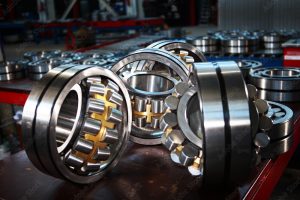Introduction to Bearings
Bearings play a pivotal role in mechanical systems by reducing friction between moving parts. Their primary function is to provide smooth motion and support mechanical loads. The usage of bearings dates back to ancient times, and over the centuries, they have evolved into a wide variety of types to suit different applications.
Types of Bearings and Their Applications
- Ball Bearings: Commonly used in machinery, these bearings use balls to maintain the separation between bearing races. Ideal for applications requiring low friction and long service life.
- Roller Bearings: These bearings use cylindrical rollers and are suitable for applications with high radial loads.
- Thrust Bearings: Specifically designed to accommodate axial loads, these bearings come in several types, including ball, roller, and fluid. For an in-depth look at thrust bearings, visit Bearing Encyclopedia.

Material and Manufacturing
Quality of bearings depends significantly on the materials used. Common materials include stainless steel, chrome steel, and ceramic. Manufacturing processes involve precision engineering to ensure durability and reliability.
Key Parameters and Specifications
- Size and Dimensions: Bearings are available in various sizes, tailored for specific machinery and load requirements.
- Load Capacity: This refers to the maximum load a bearing can handle, both in terms of radial and axial loads.
- Speed: Bearings are rated for their maximum rotational speed.
- Life Span: The expected operational life is determined based on application and maintenance.
Advantages and Disadvantages
Advantages of bearings include reduced friction, enhanced efficiency, and increased operational lifespan of machinery. Disadvantages may include the initial cost and the need for regular maintenance.
Cost and Budget Considerations
- Initial Price: The cost of bearings varies depending on type, material, and specifications.
- Maintenance Expenses: Regular lubrication and inspection are necessary to extend the bearing's life, incurring additional costs.
Conclusion
Bearings are essential components in mechanical systems. Understanding their types, materials, and specifications is crucial for selecting the right bearing for any application.
